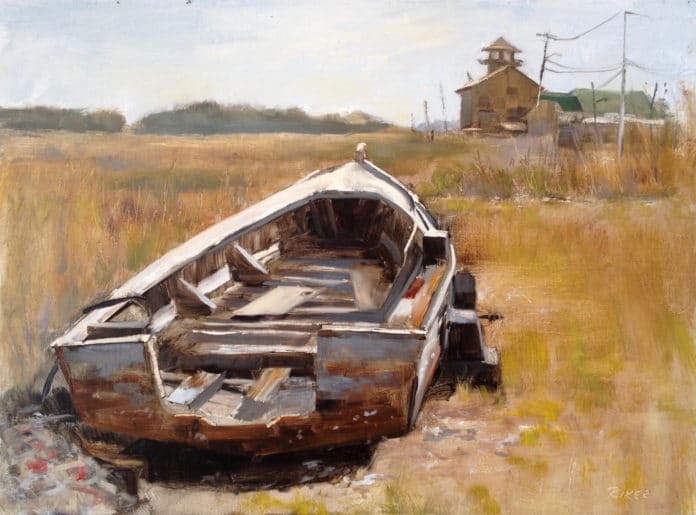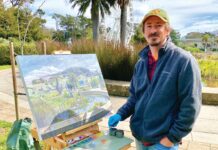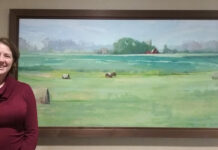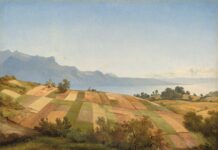This Pennsylvania artist loves to paint the light, yet it’s of utmost importance to her to nail down the darks in the composition first thing. See how this approach lets Julie Riker tackle complex subjects confidently.
Julie Riker’s paintings start in the dark. The oil painter usually avoids mid-value scenes and scenes with little value contrast. Instead she looks to incorporate elements of deep shadow to create a strong composition.
“I mix transparent colors to make a dark, and then I thin that mixture with Gamsol,” says Riker. “I block in an underpainting by toning the surface with this mixture, then wiping the tone away for the lights. It’s almost a notan at that point.” (A notan is simply white and black, strictly speaking.) “I am drawing the shapes of light and dark, their separation. It’s not a line drawing. It’s my belief that the sense of light is created by the darks — the shadow defines the light.”
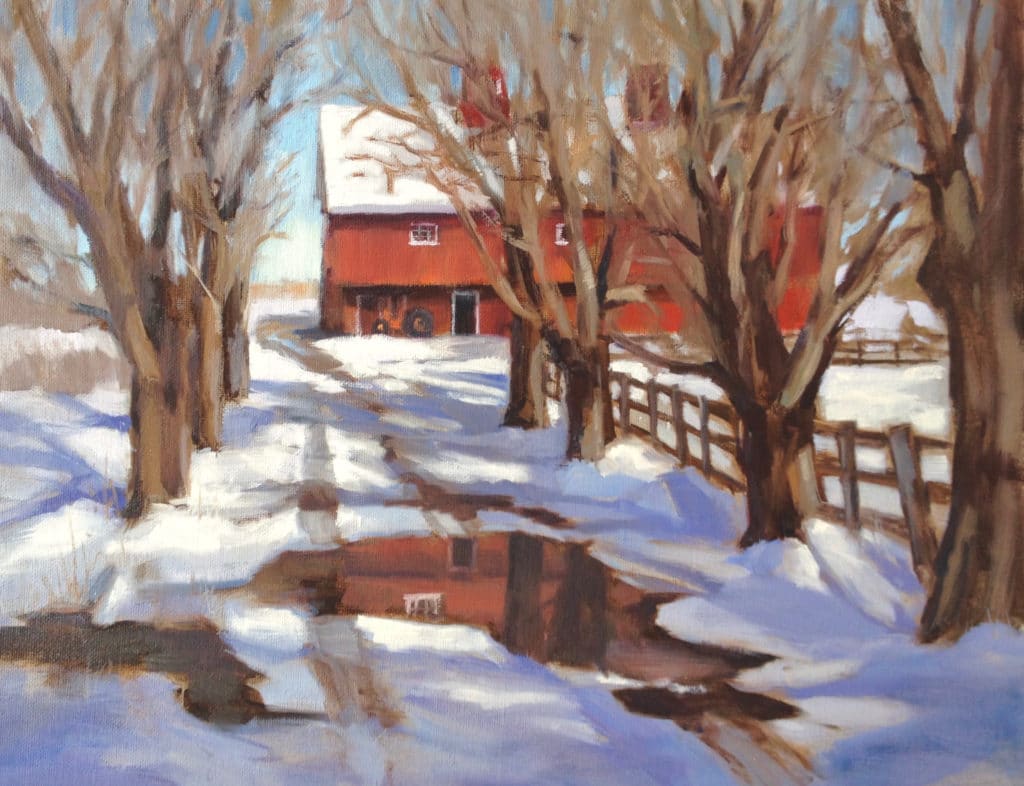
Riker doesn’t need to wait for the underpainting to dry before building color on top of it, mostly because that underpainting mixture is thinned with Gamsol, which evaporates quickly, and partly because she doesn’t mind additional dark colors mixing with her warm underpainting color. For her lights, she wants clean color.
“I block in the light and dark separation and keep those two color families separate throughout the painting process,” says the artist. “I don’t have separate mixing areas for lights and darks, but I do use different color families in dark and light areas. Sometimes the dark that I use as my initial wash can be left on its own as my dark shadow color, so all I’m doing is just painting lights. You can see in some of my paintings how I use the idea of separation of lights and darks. If you squint your eyes, you can really just see a light-and-dark design.”
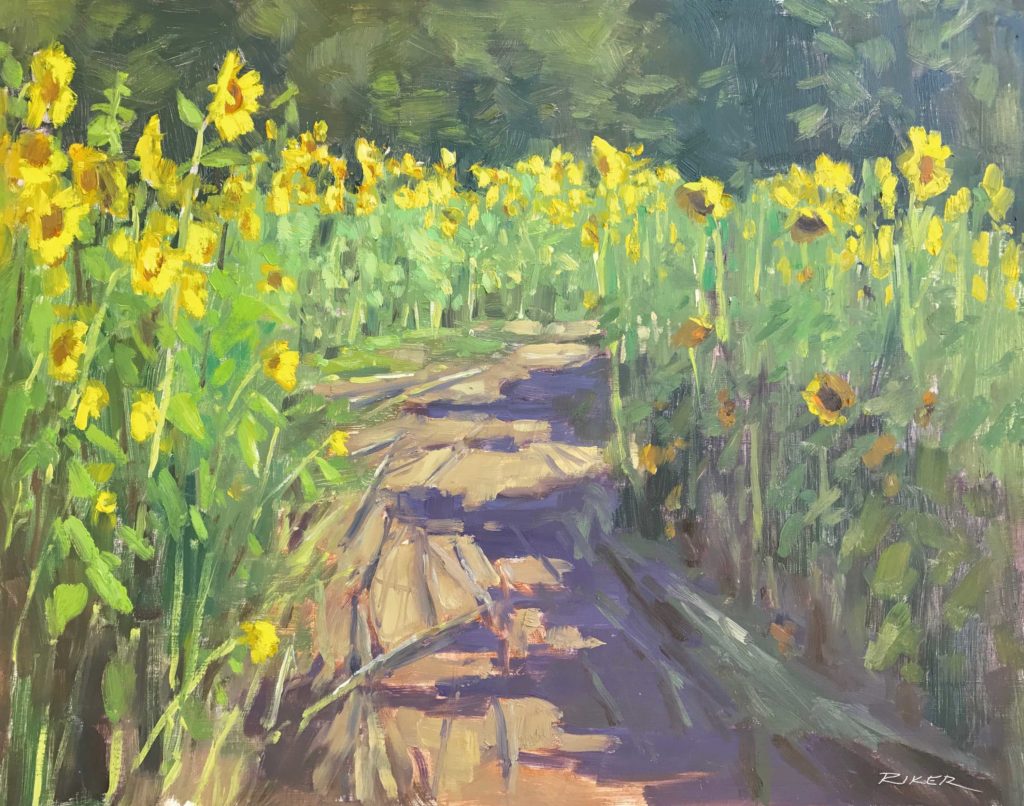
To remove the underpainting color to indicate light areas, Riker turns to a number of tools. She’ll use squeegees, rags, brushes with a bit of Gamsol on them, Q-Tips, and a tool with rubber on each end for drawing in wet paint. These devices are purely for removing the underpainting; she is generally not interested in those marks appearing in the finished product. “The wiped areas get covered later in my paint application,” says Riker. “I don’t want to see signs of that tool in the final painting. I’m just creating a blueprint for where my lights and darks will go, and then paint into that.”
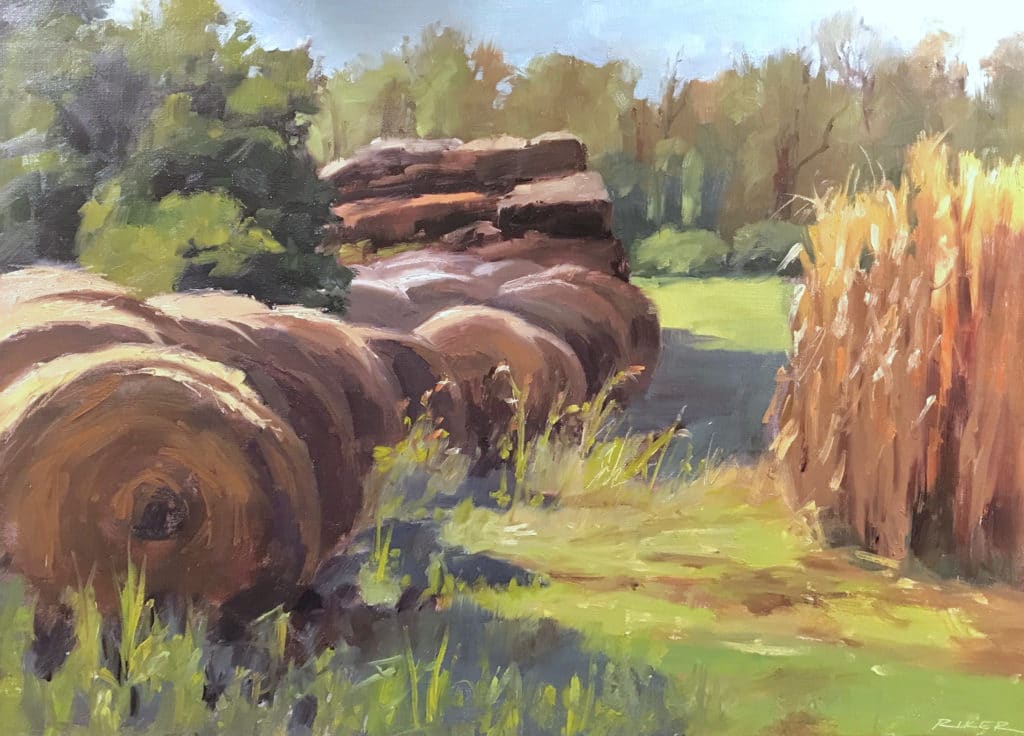
She goes on, “I spend a lot of time getting that initial pattern of shadow and light, then once that is established, spend more time with colors in the midtones and the lights. By getting darks in and establishing the value design, it’s already a painting. This is the beauty of blocking in the darks ahead of time. Often what attracts you to a scene is the light, and that’s the first thing I get down. Establish the blueprint for the composition.
“I have already told myself, ‘This is where my darks and lights are going to be.’ If the light conditions change, I already have established my dark-light pattern. Some painters might wait until the end to add shadows, but the light is gone or changed by then. I try to get the shadows down first. The truth is, I love color — it adds excitement and beauty to a piece — but it’s already a painting once it has that monochromatic design.”
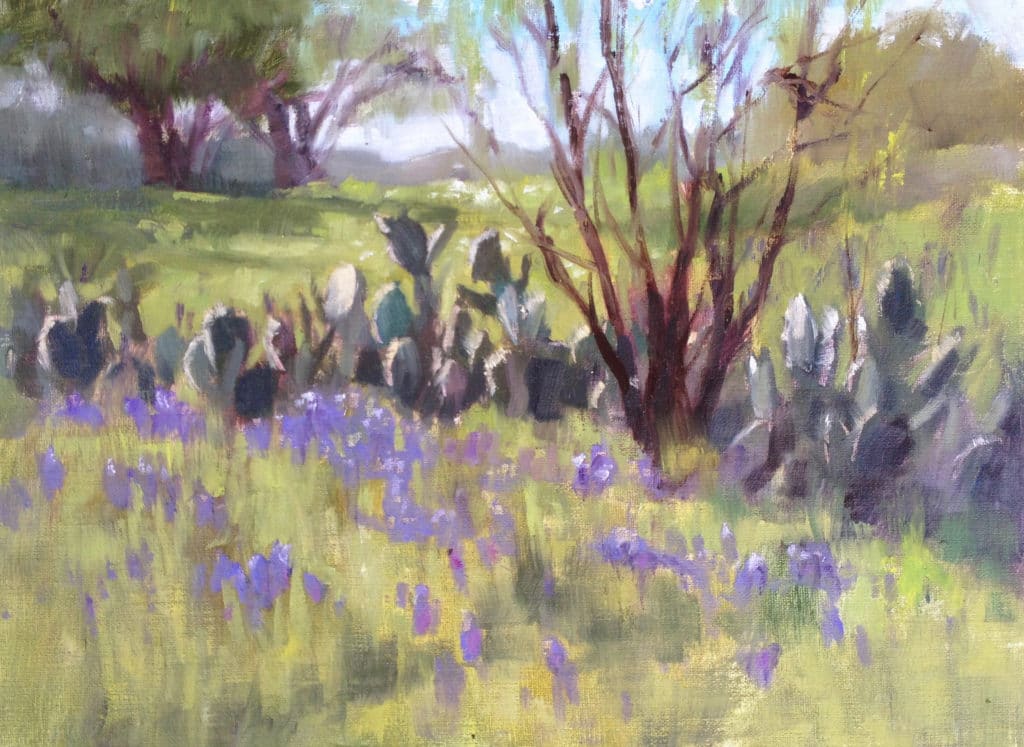
“Every time I go out, I feel like I’ve learned something and improved,” Riker says. “My plein air work started about 10 or 12 years ago when I went to a local art center and took a class. Our teacher took us outside to paint and I loved it. The light is beautiful outdoors, and I love being outside. That was my initial introduction, and now, there’s so much I love about it. I really love just scoping out an area and trying to compose something. It’s like a hunt, looking for something that is not the obvious. I will sometimes spend a long time just looking around . . . and then I find something challenging for myself, or something I haven’t done before. If I find something that I think might be too hard to paint, then I do that painting.”

